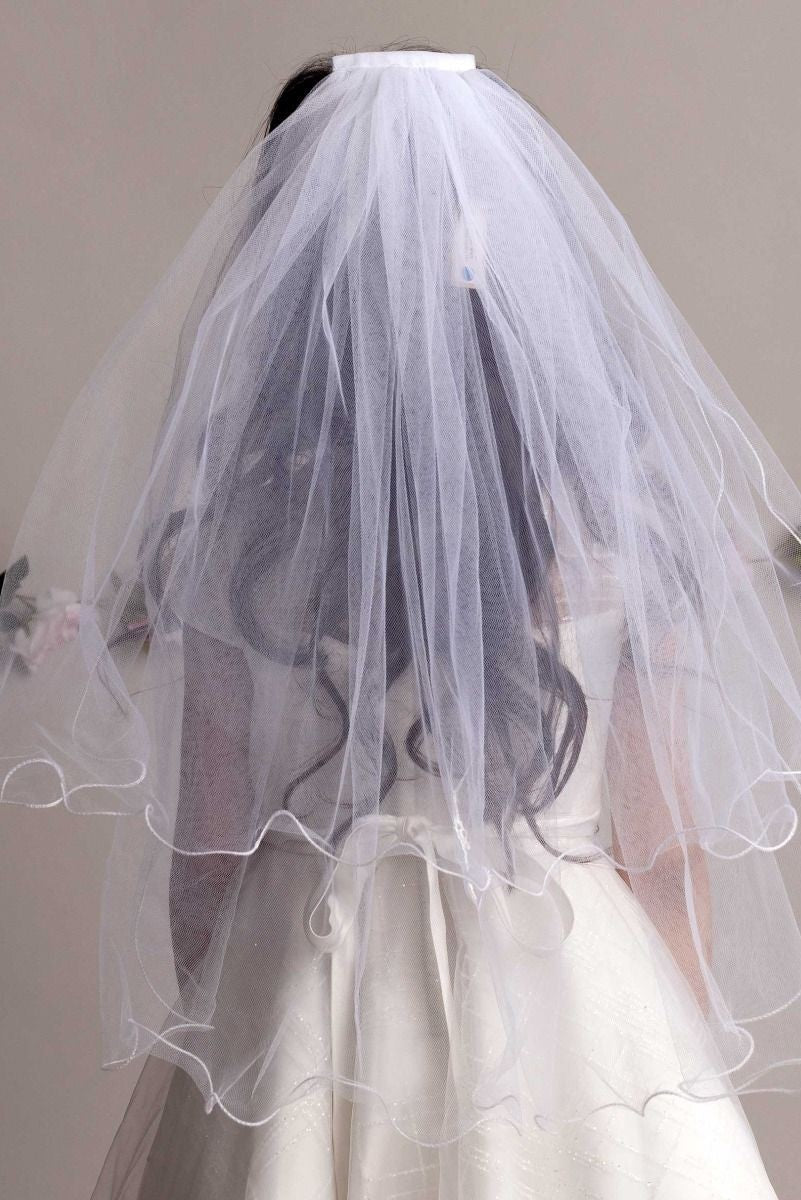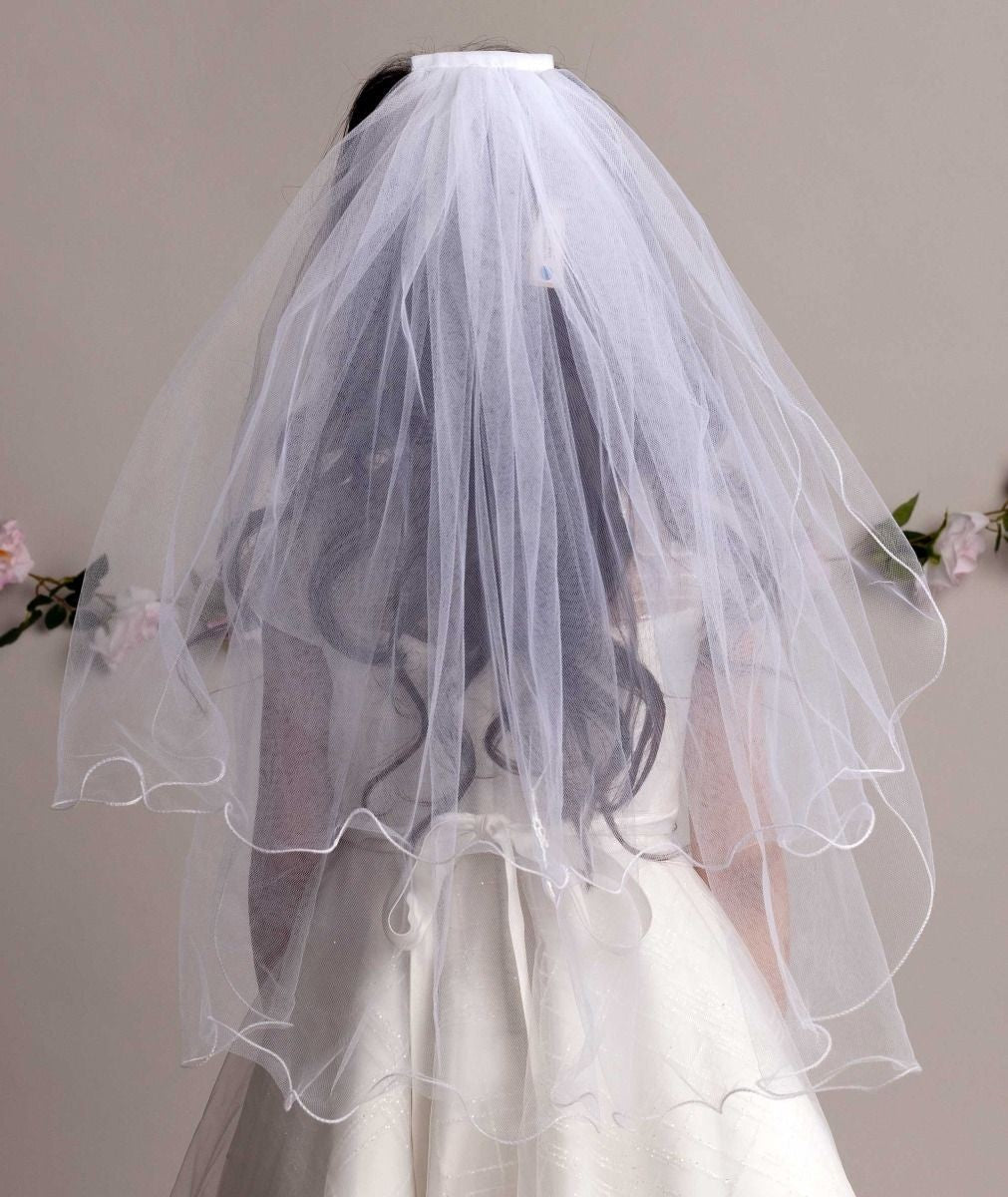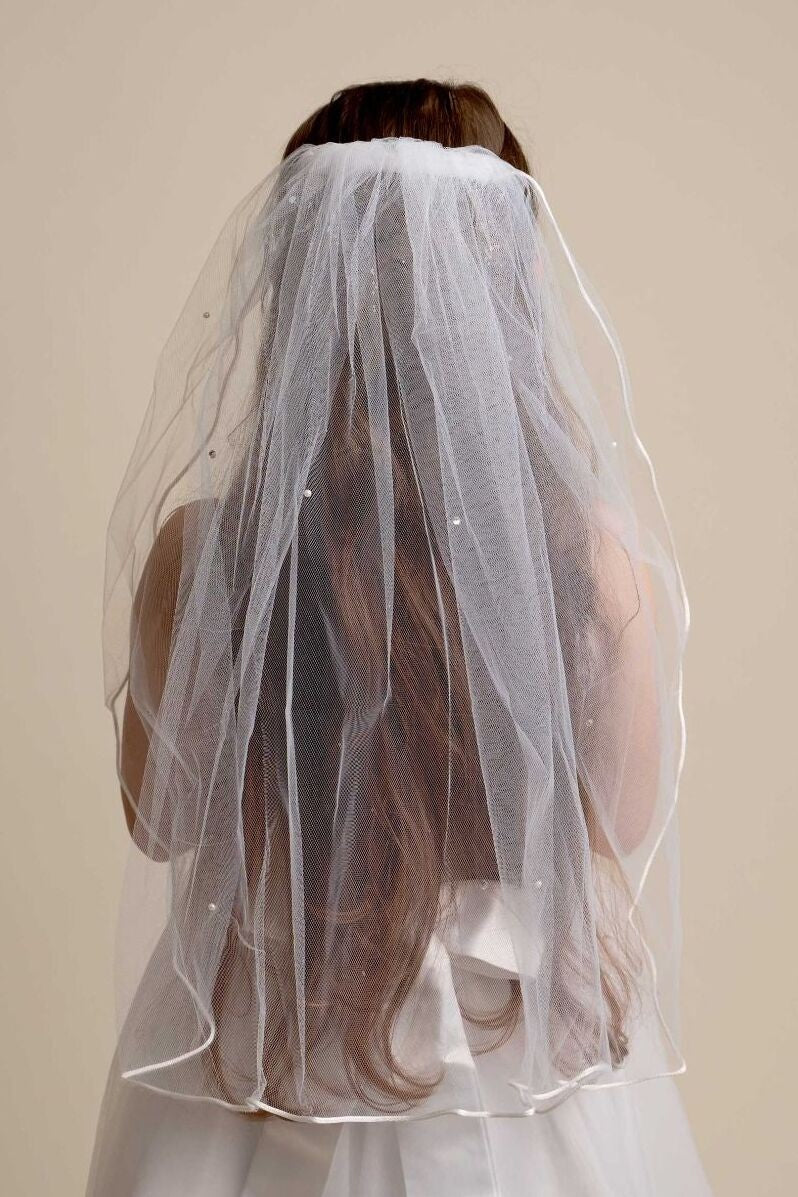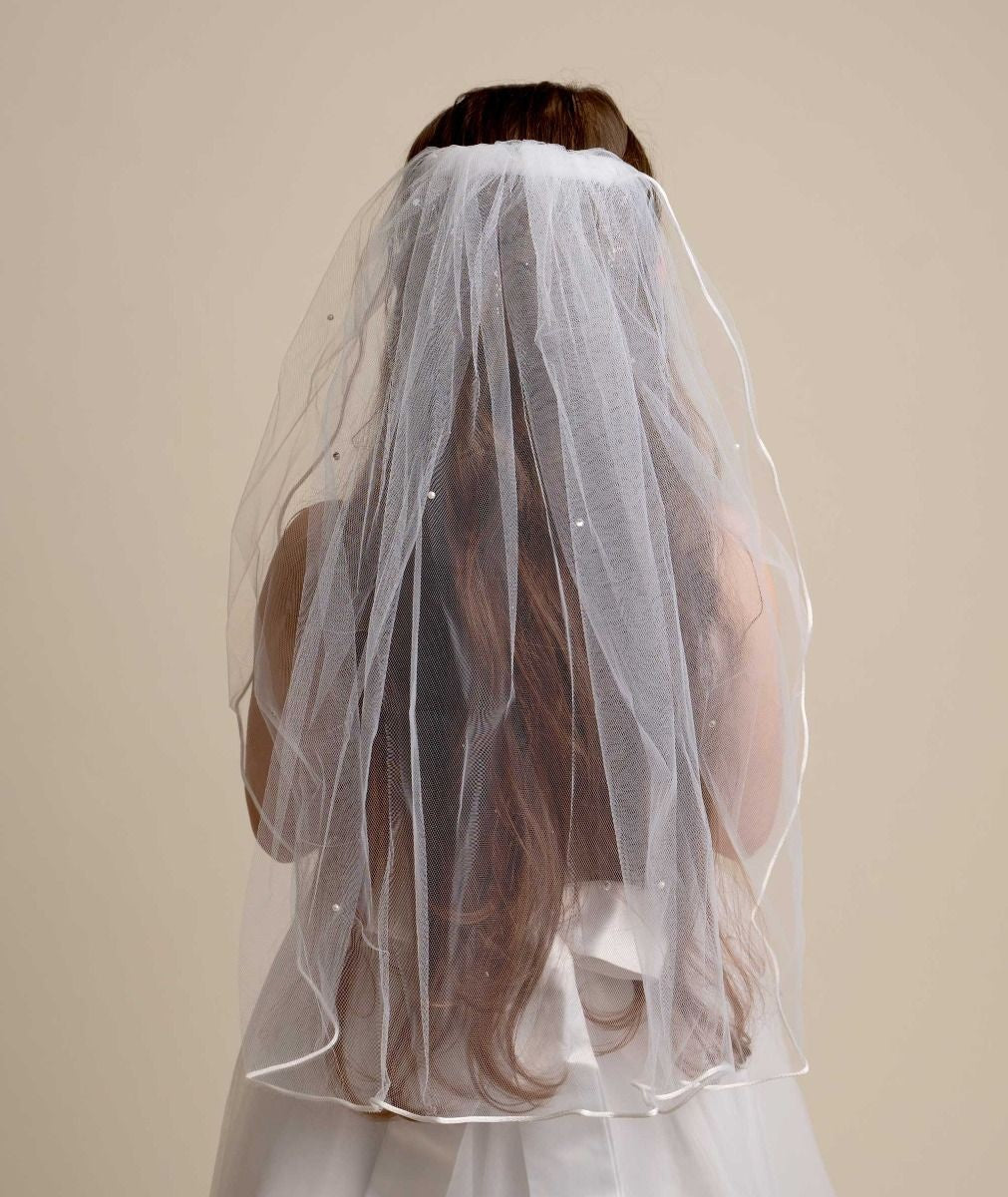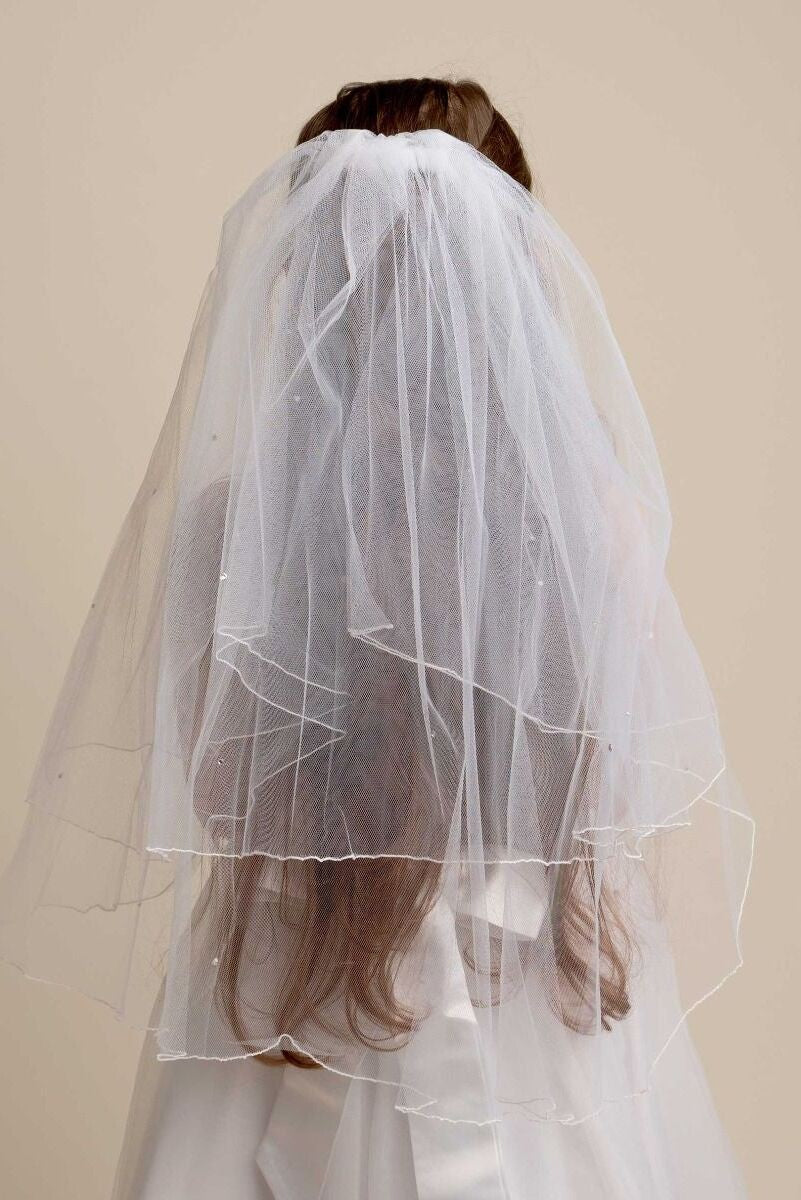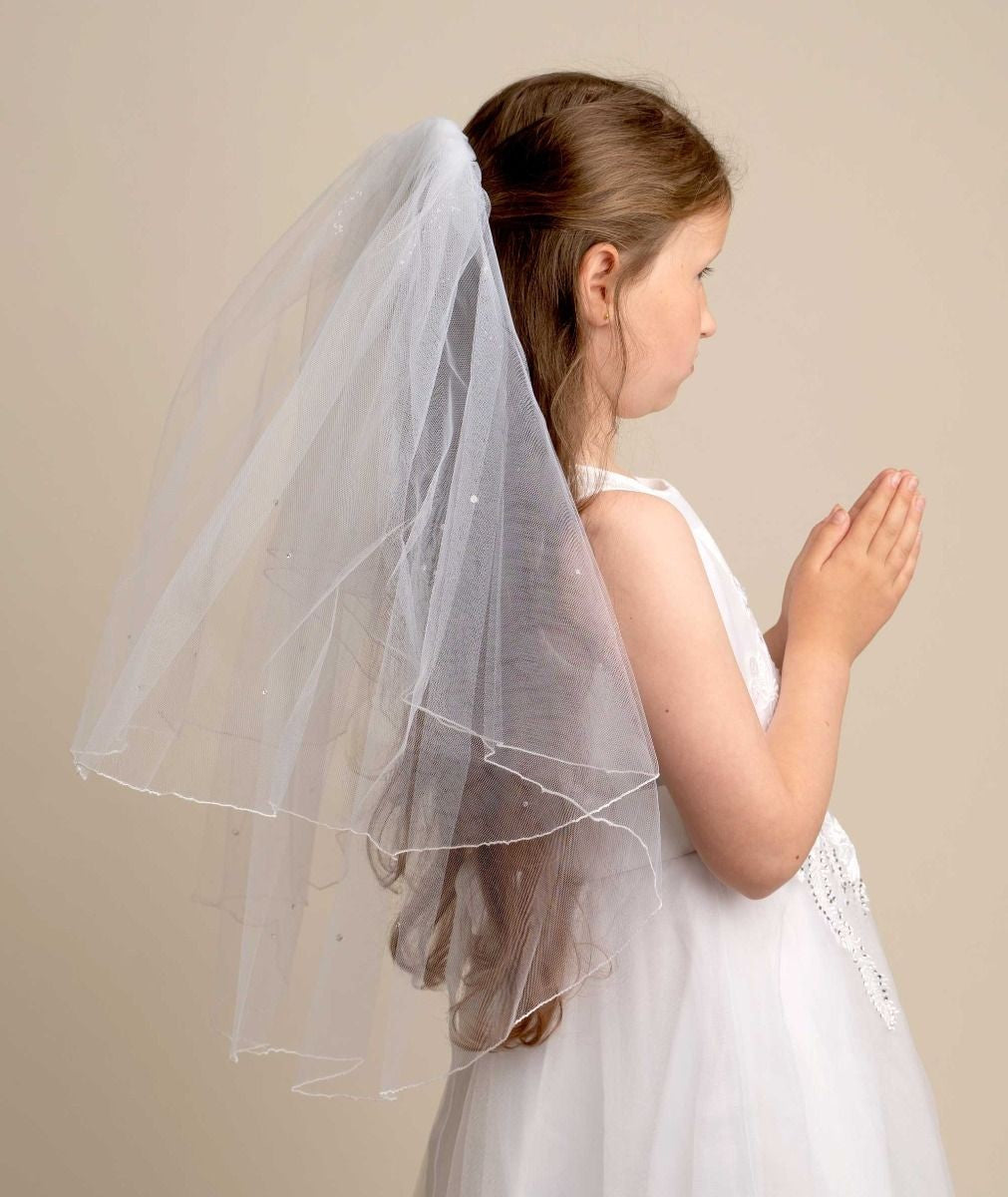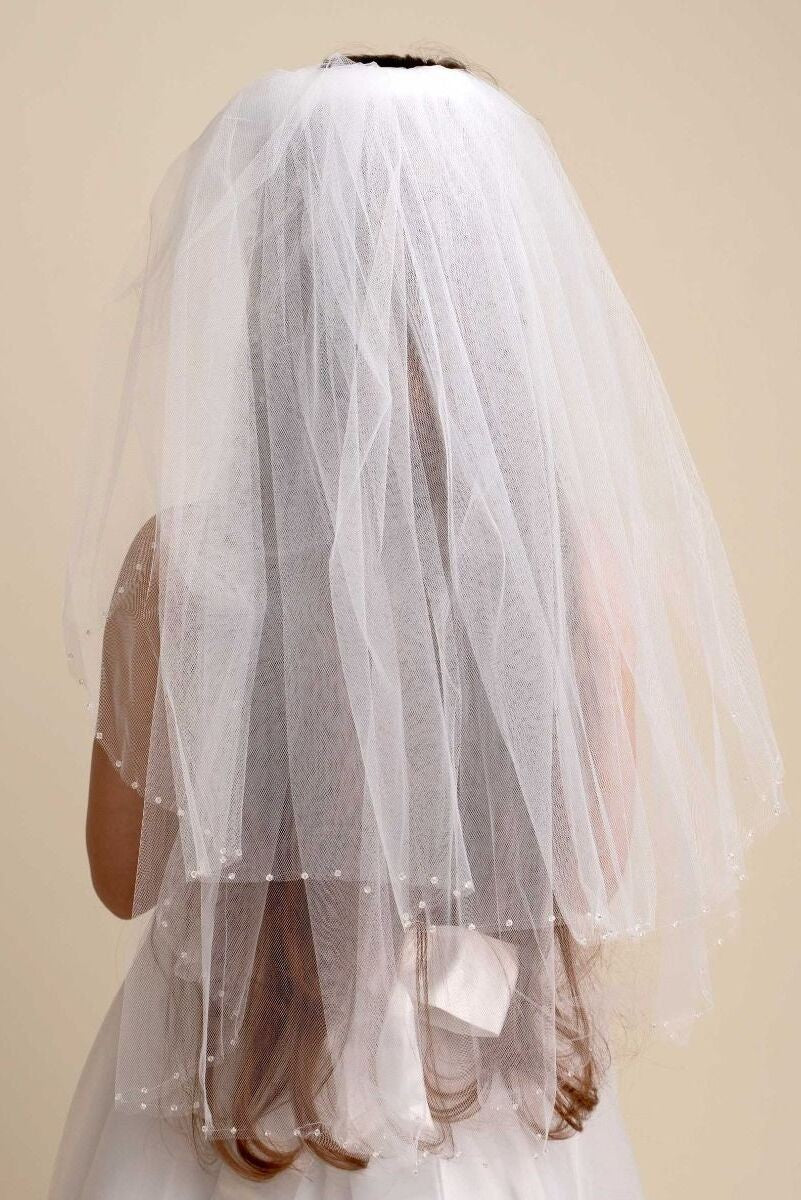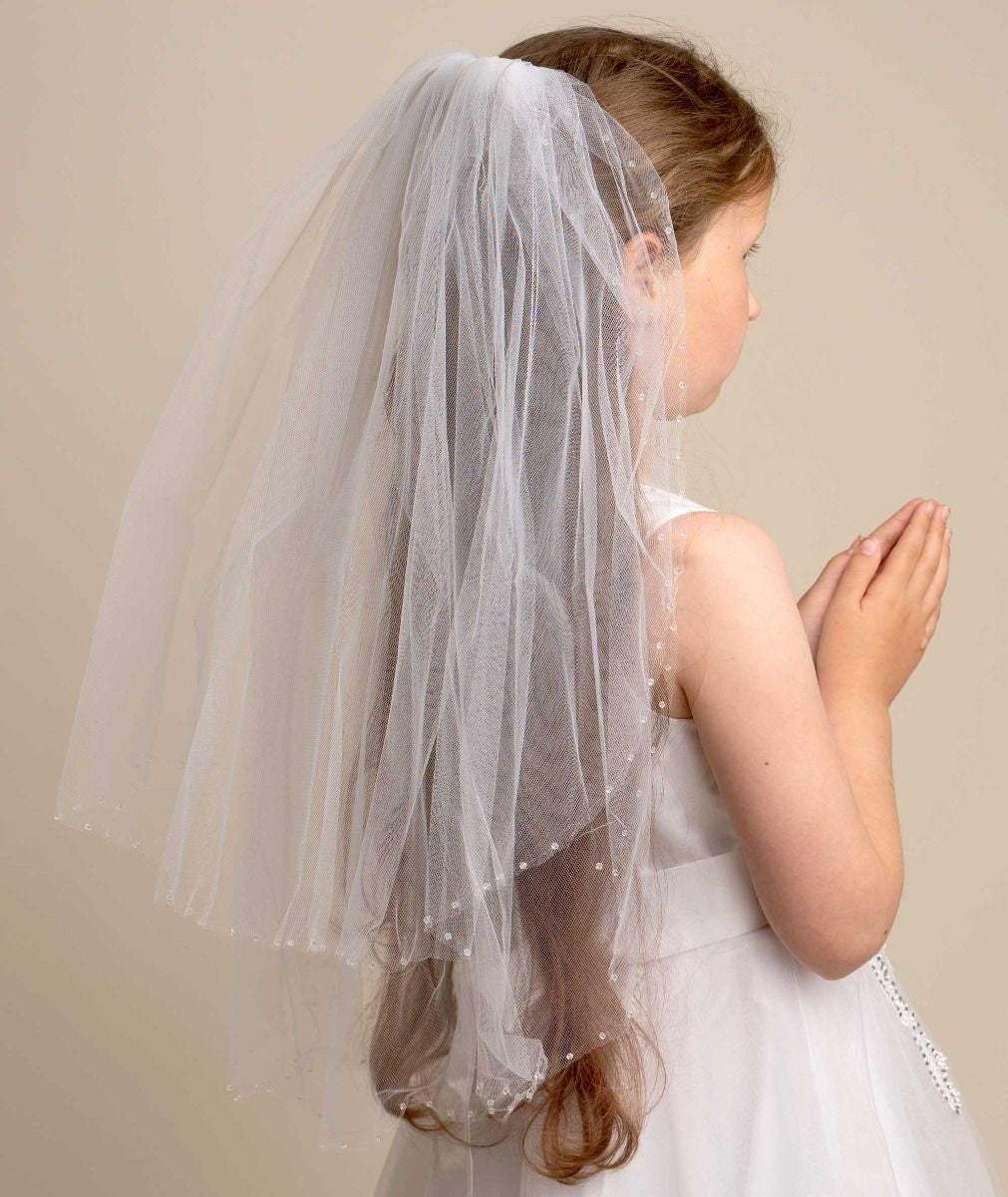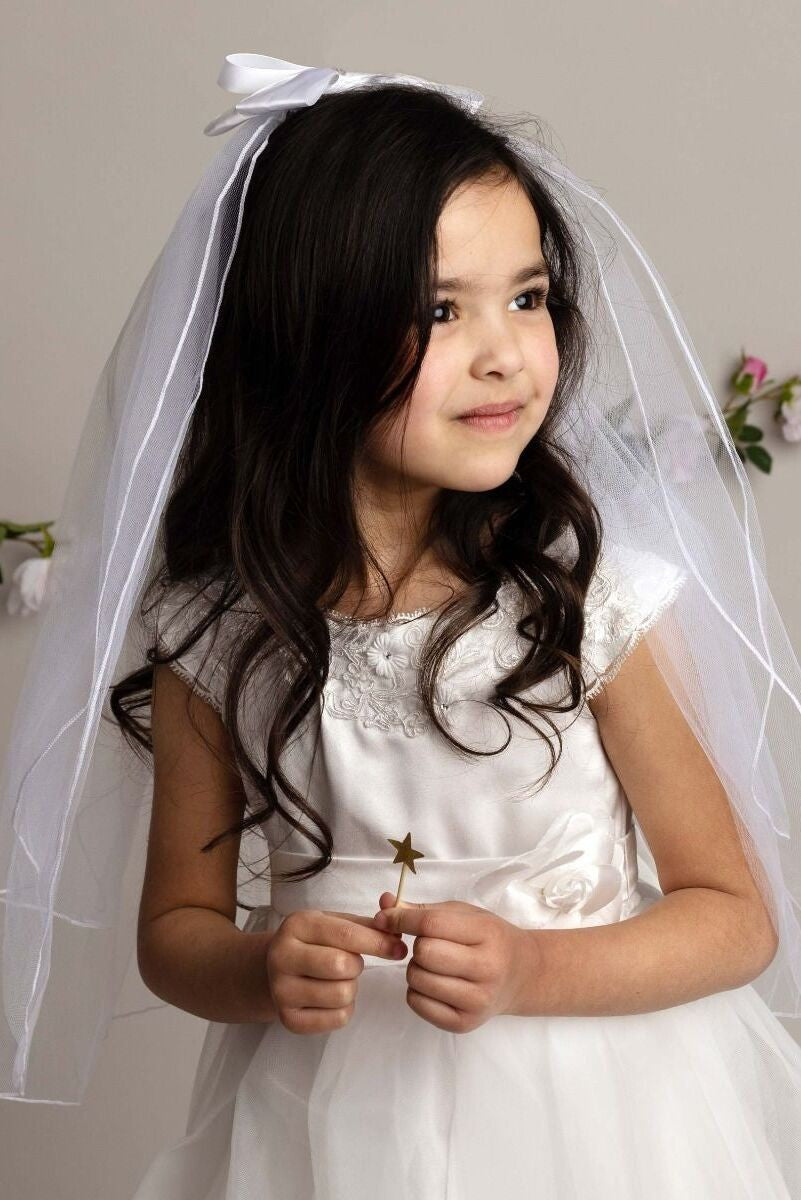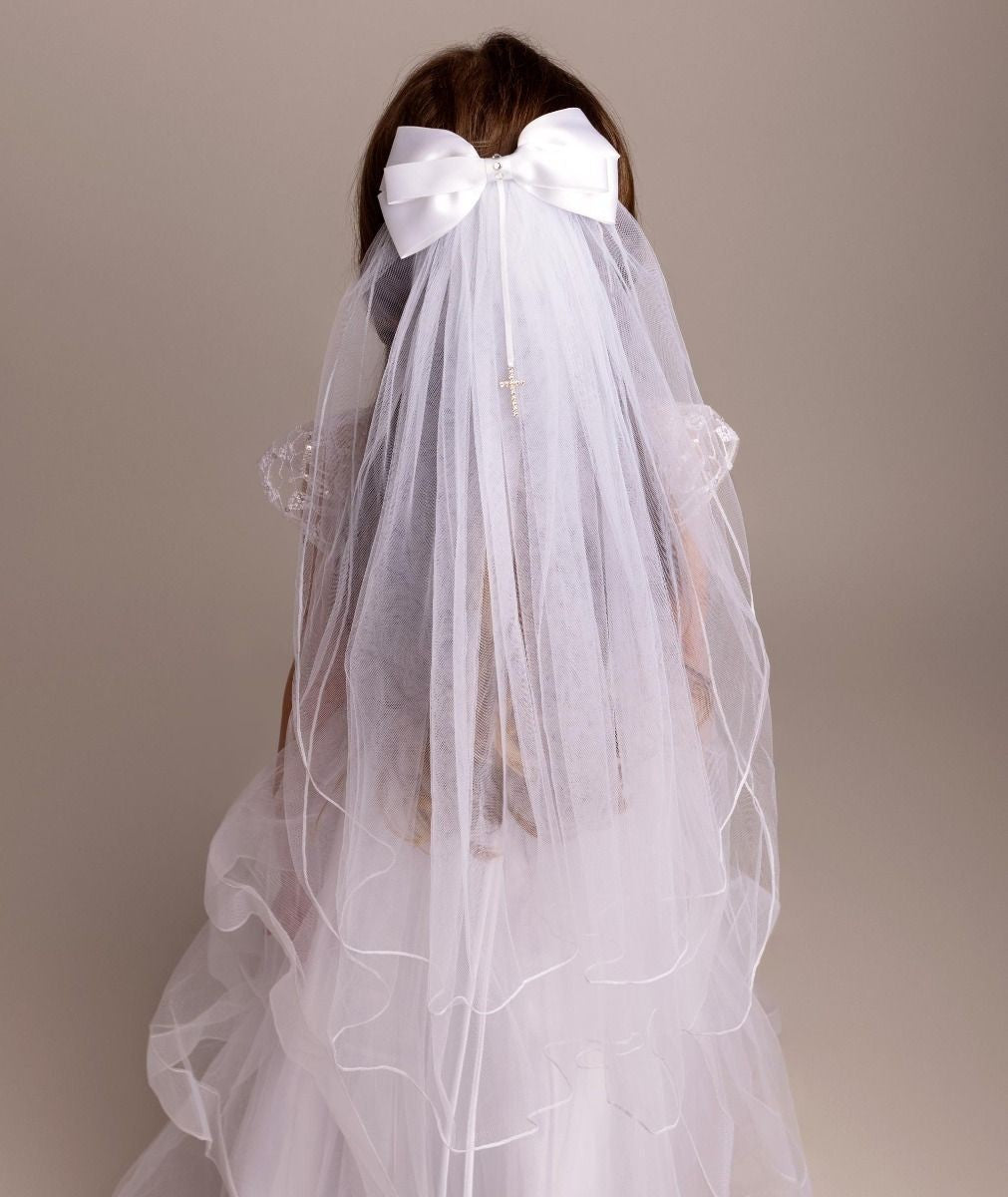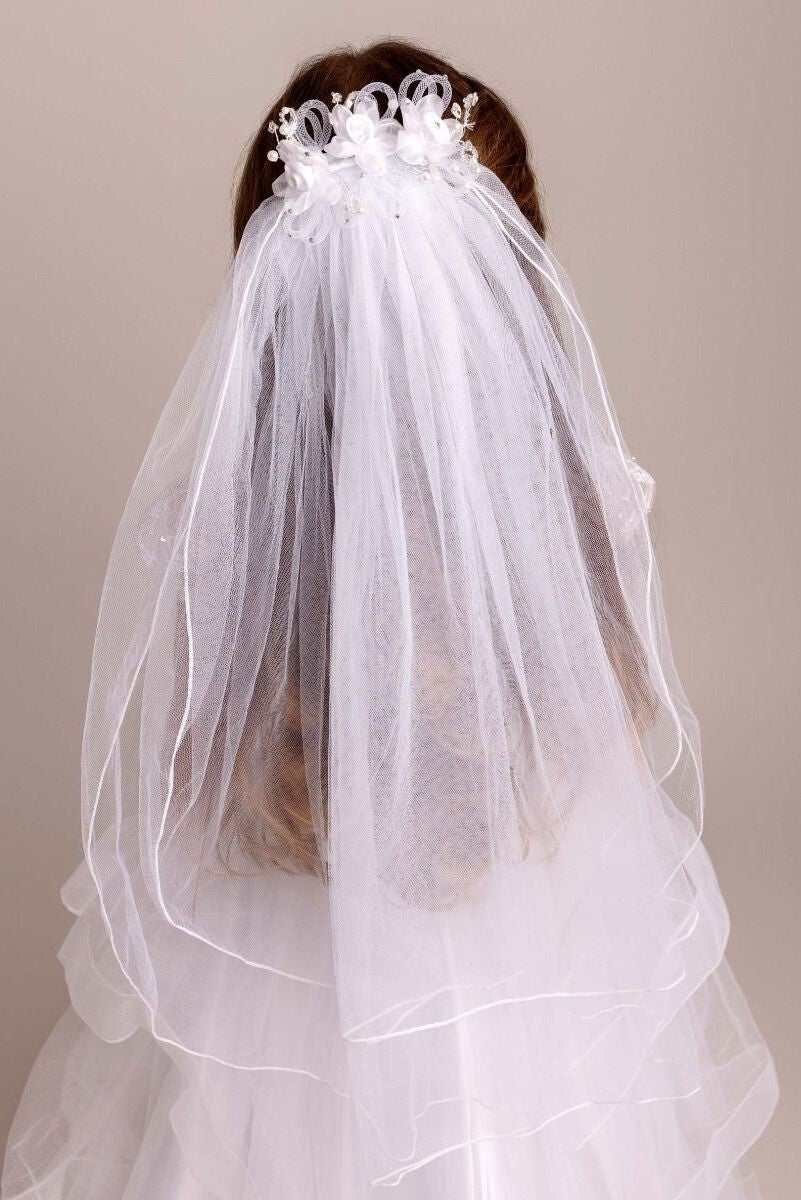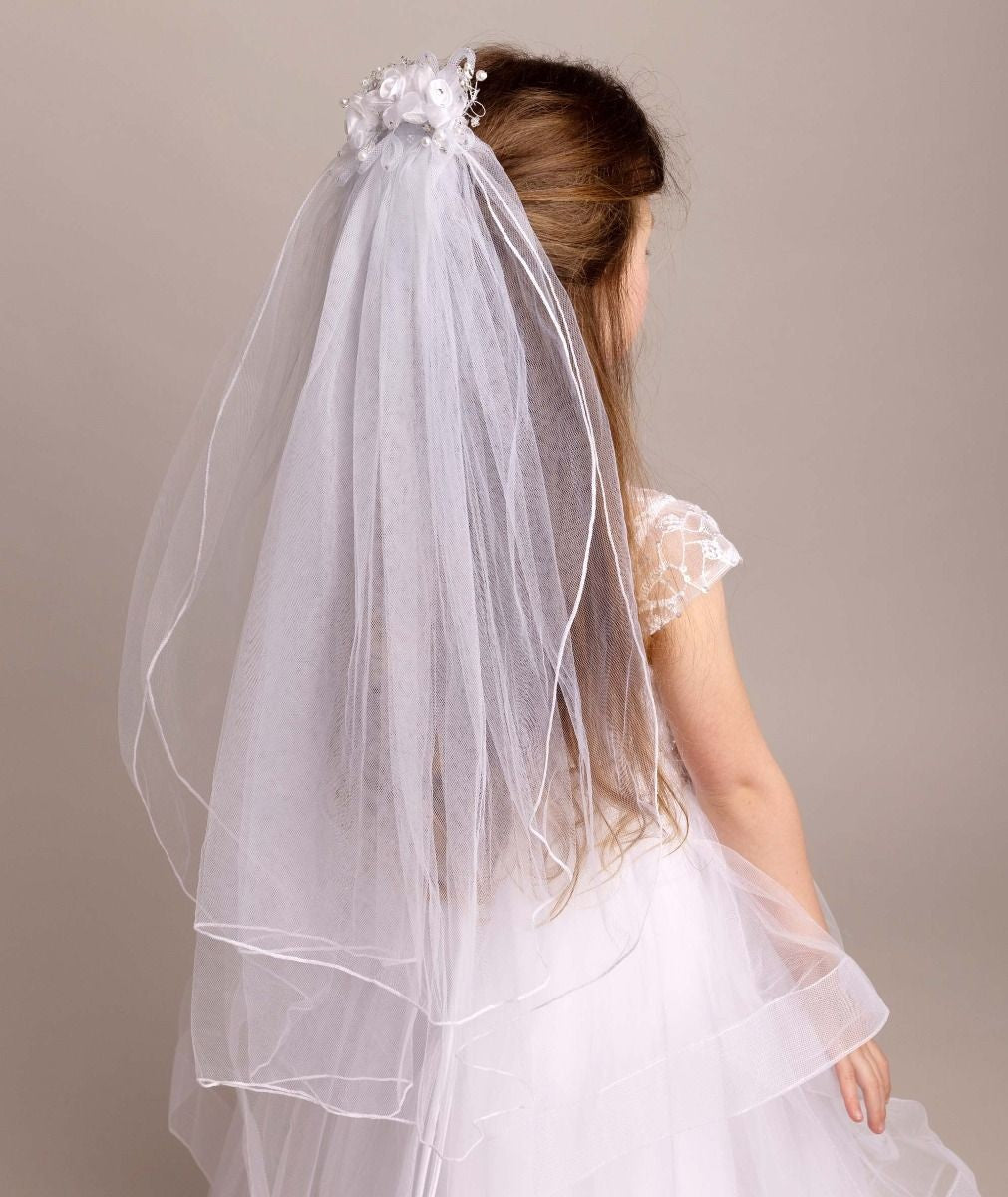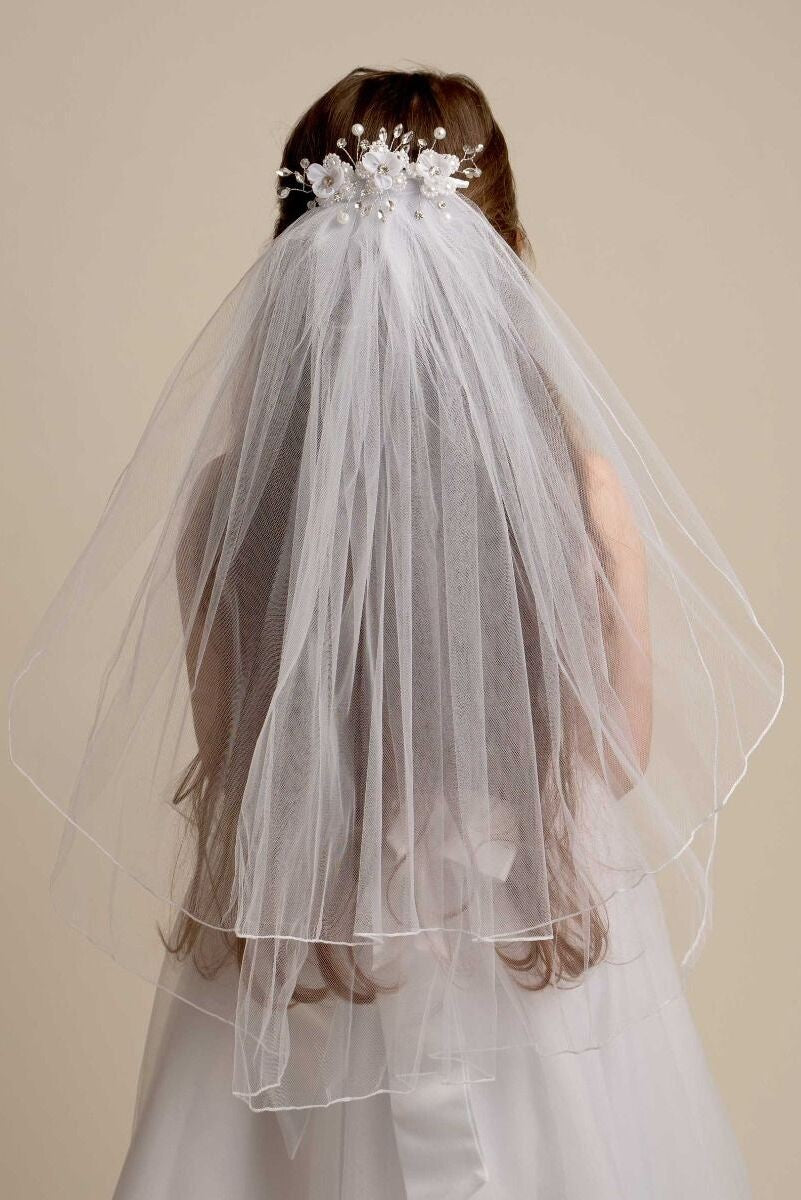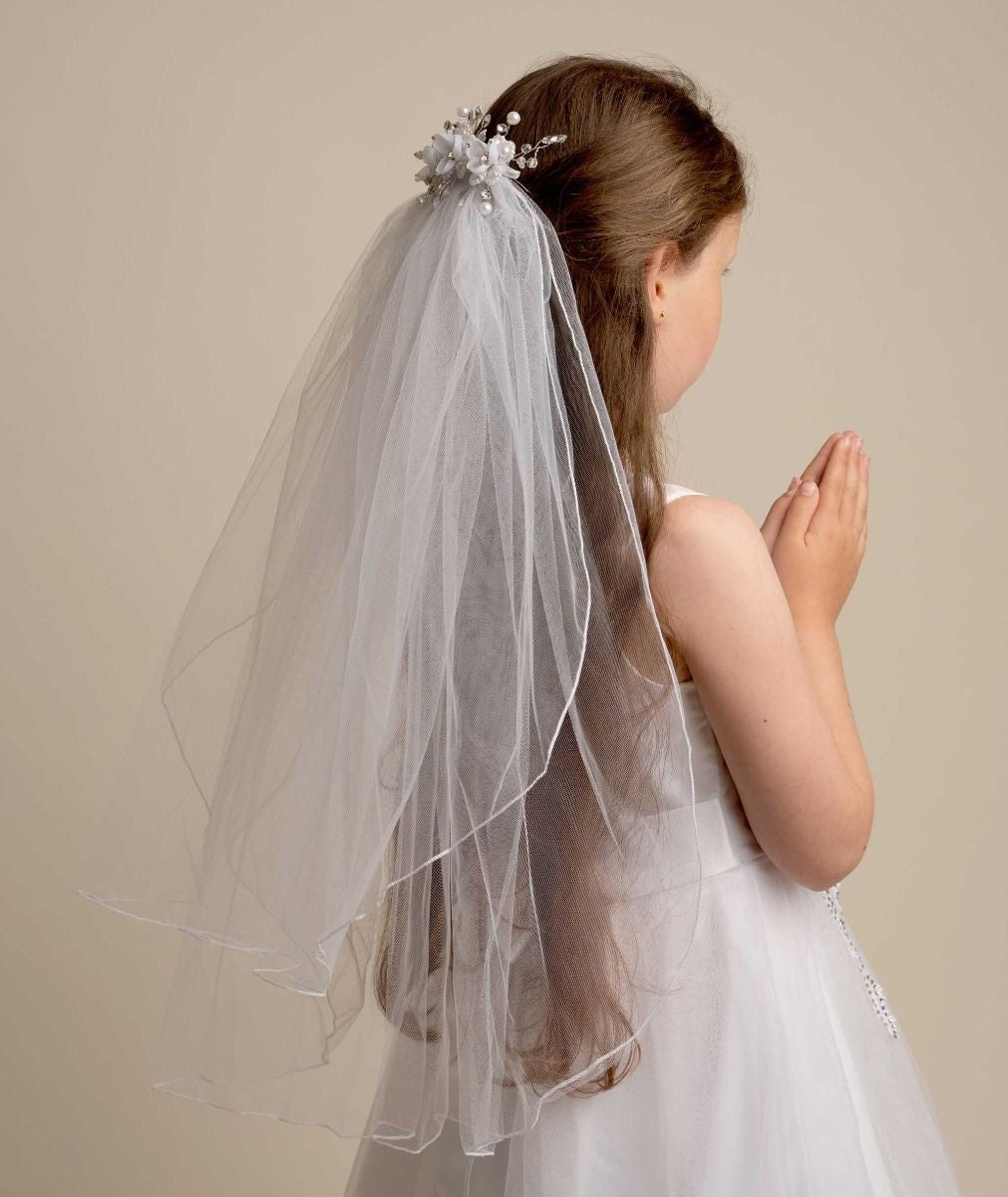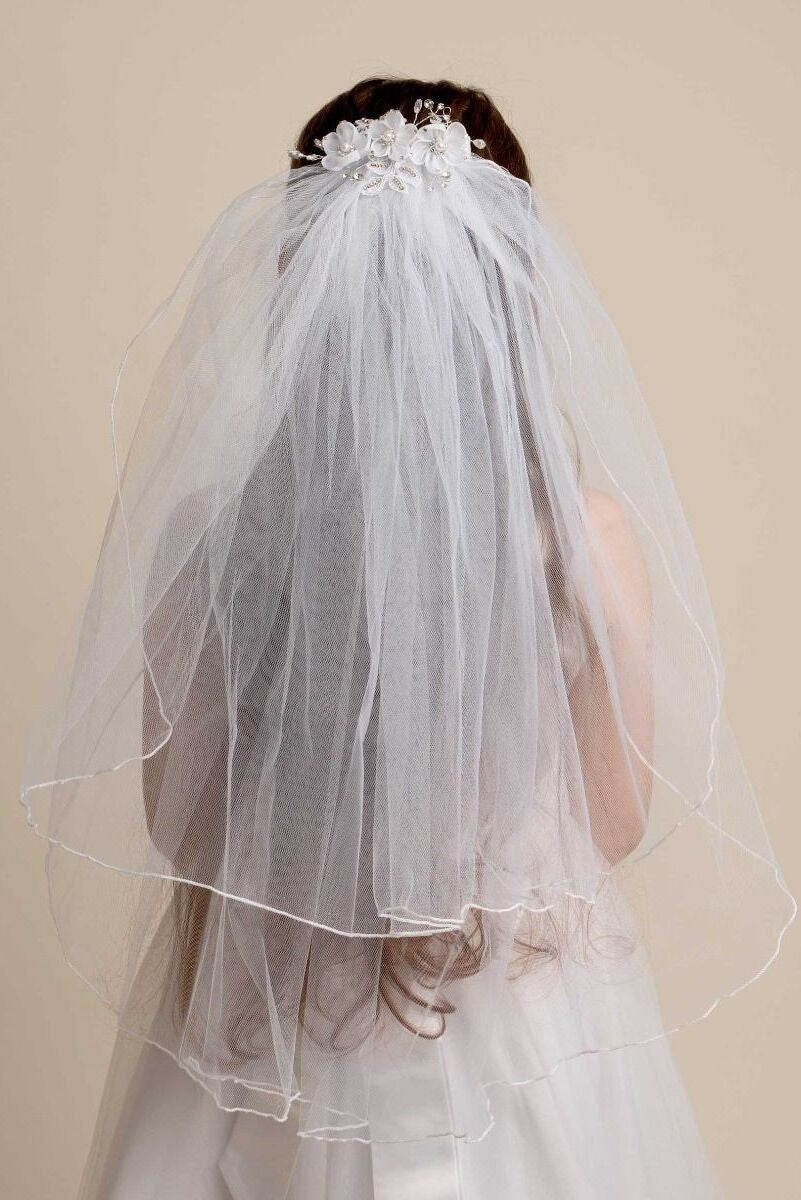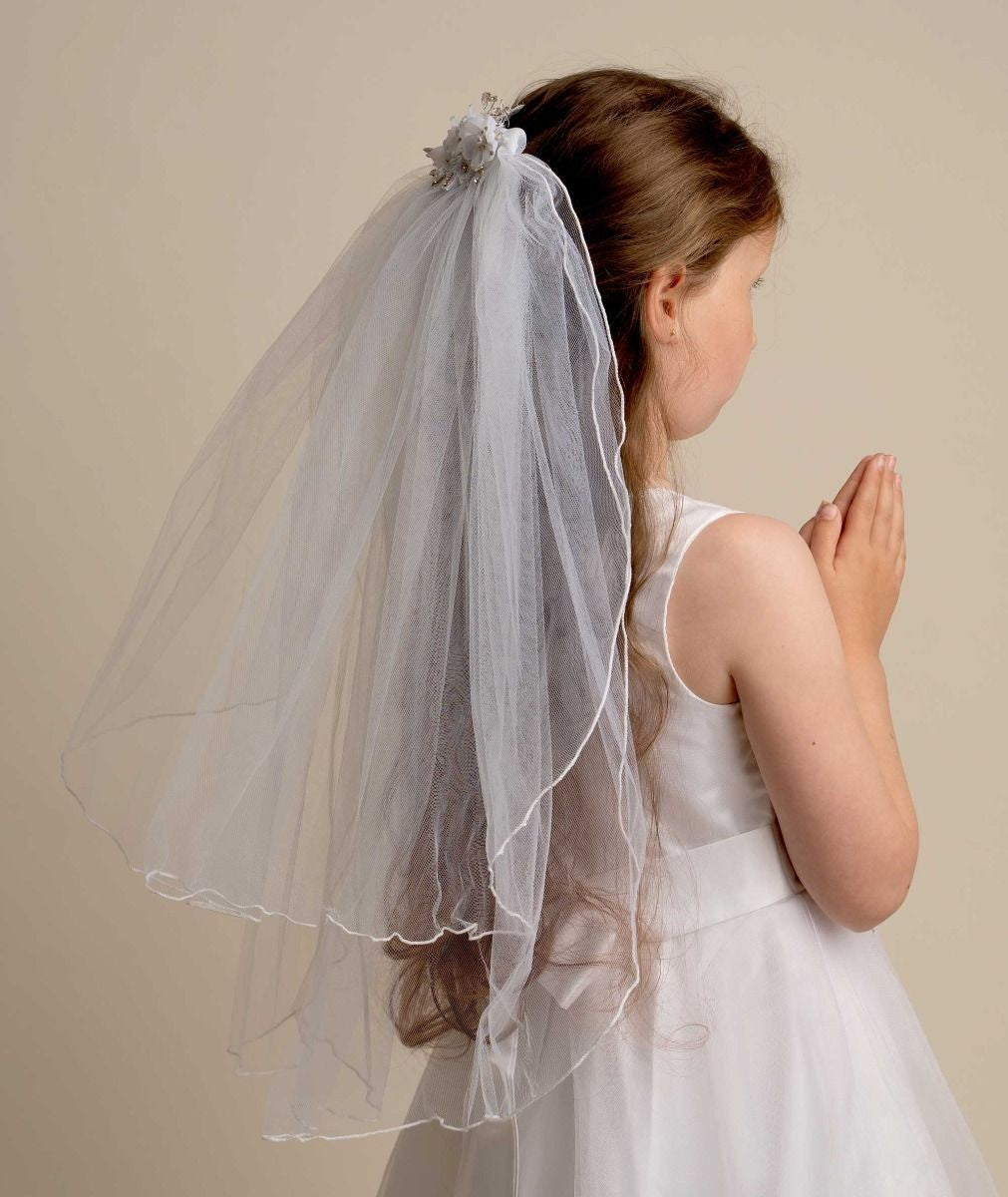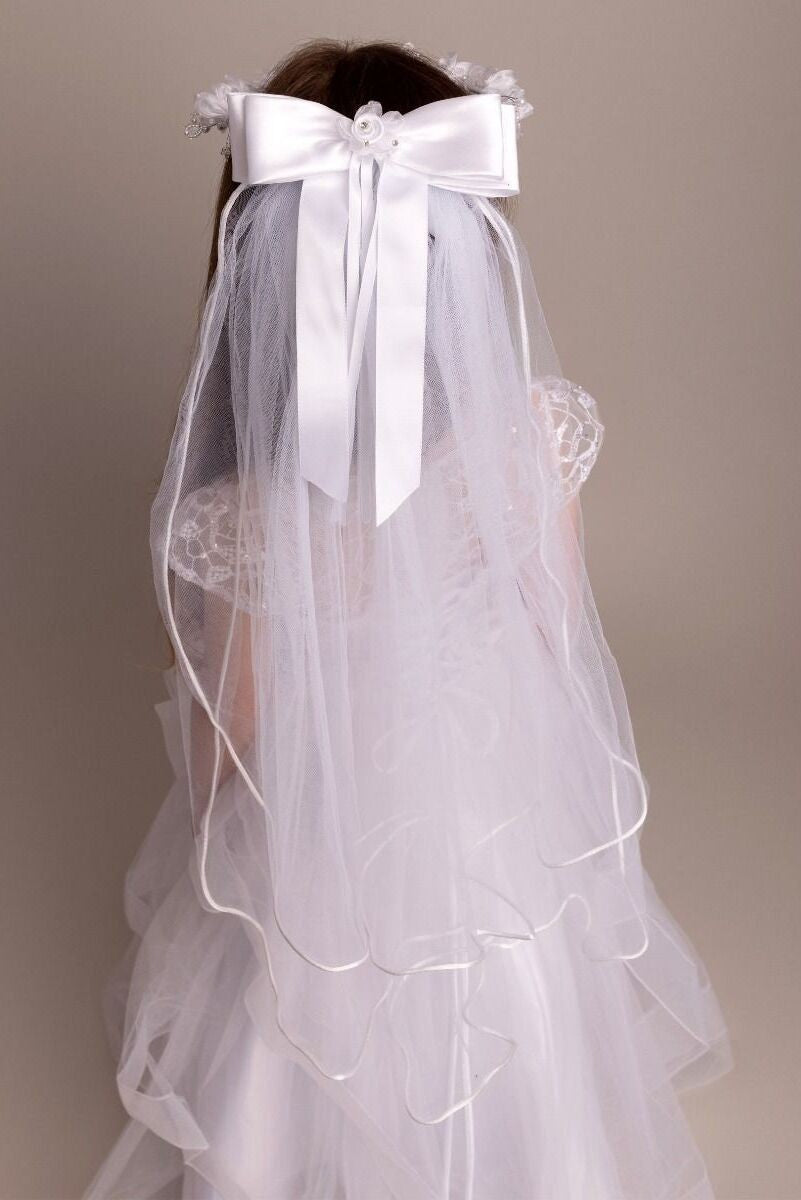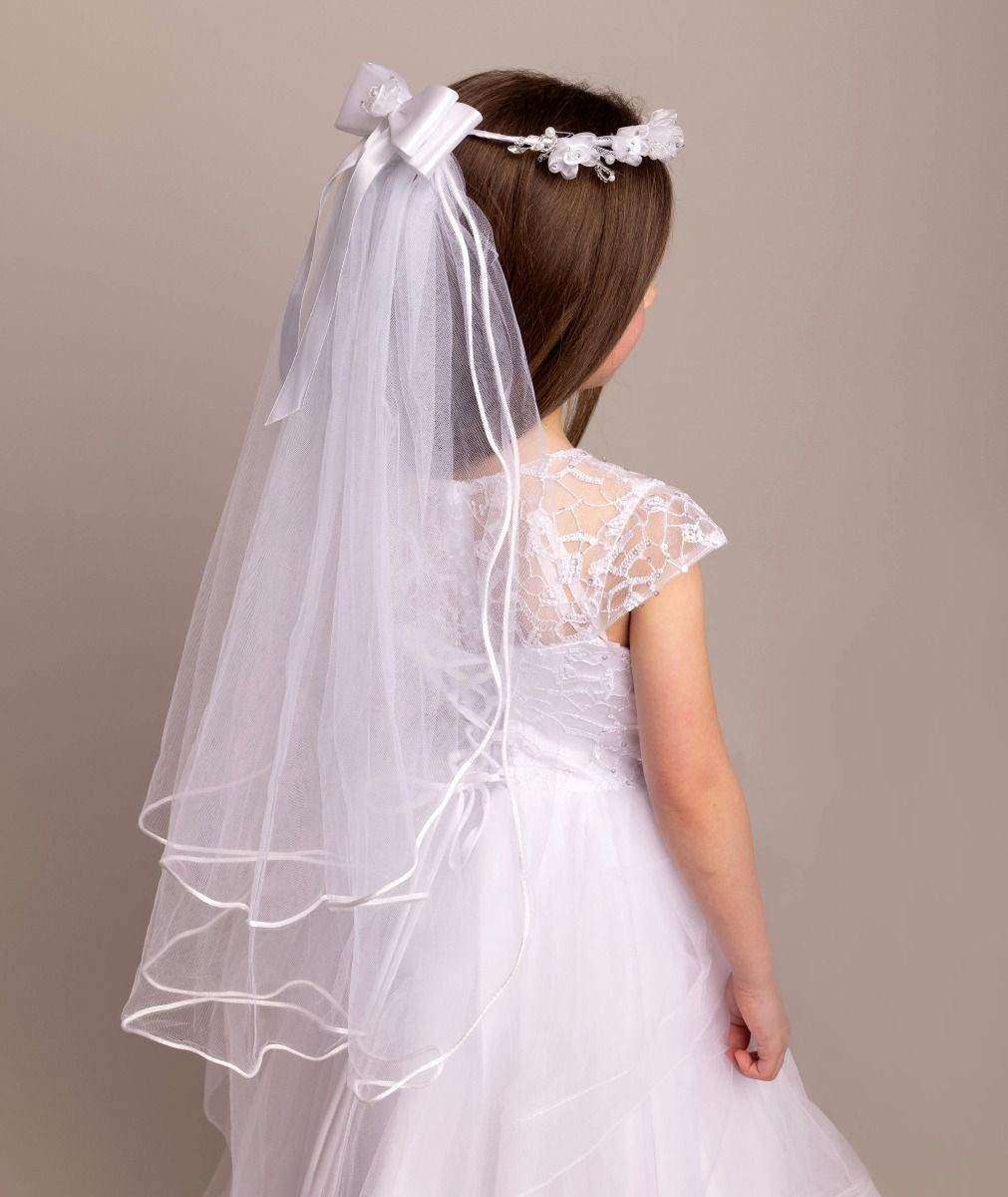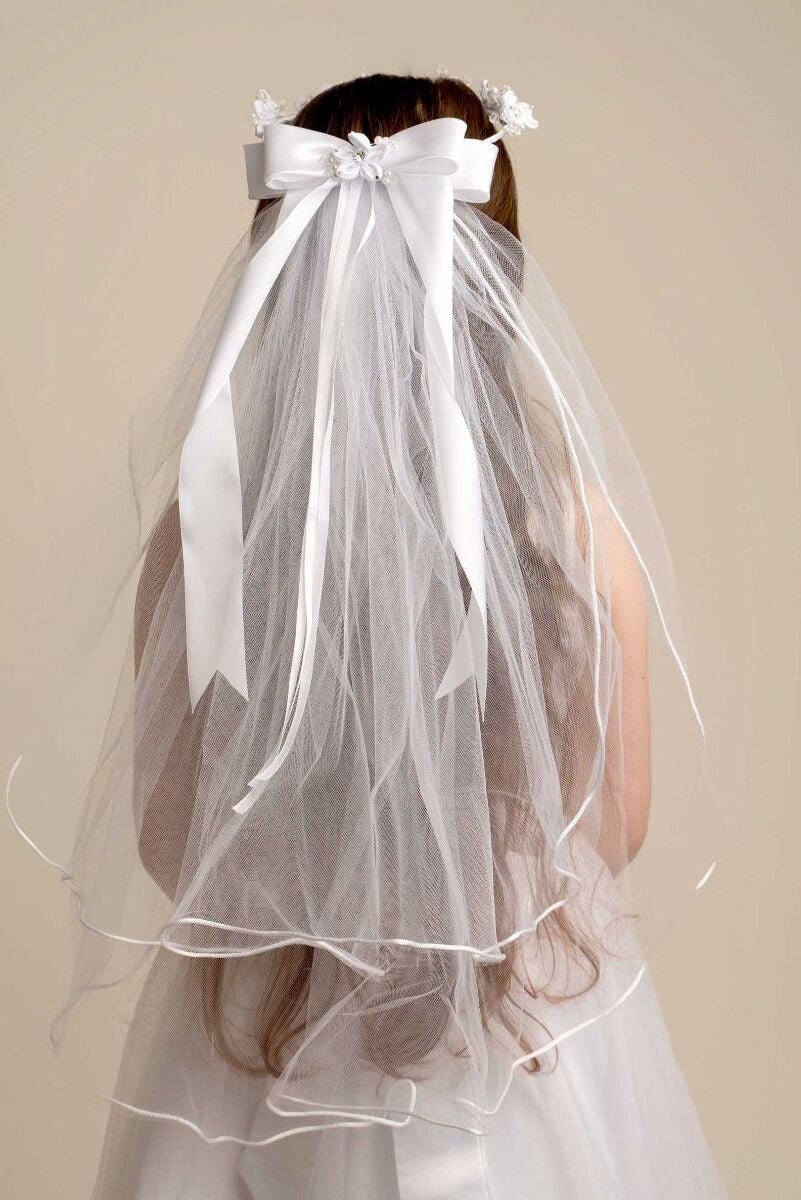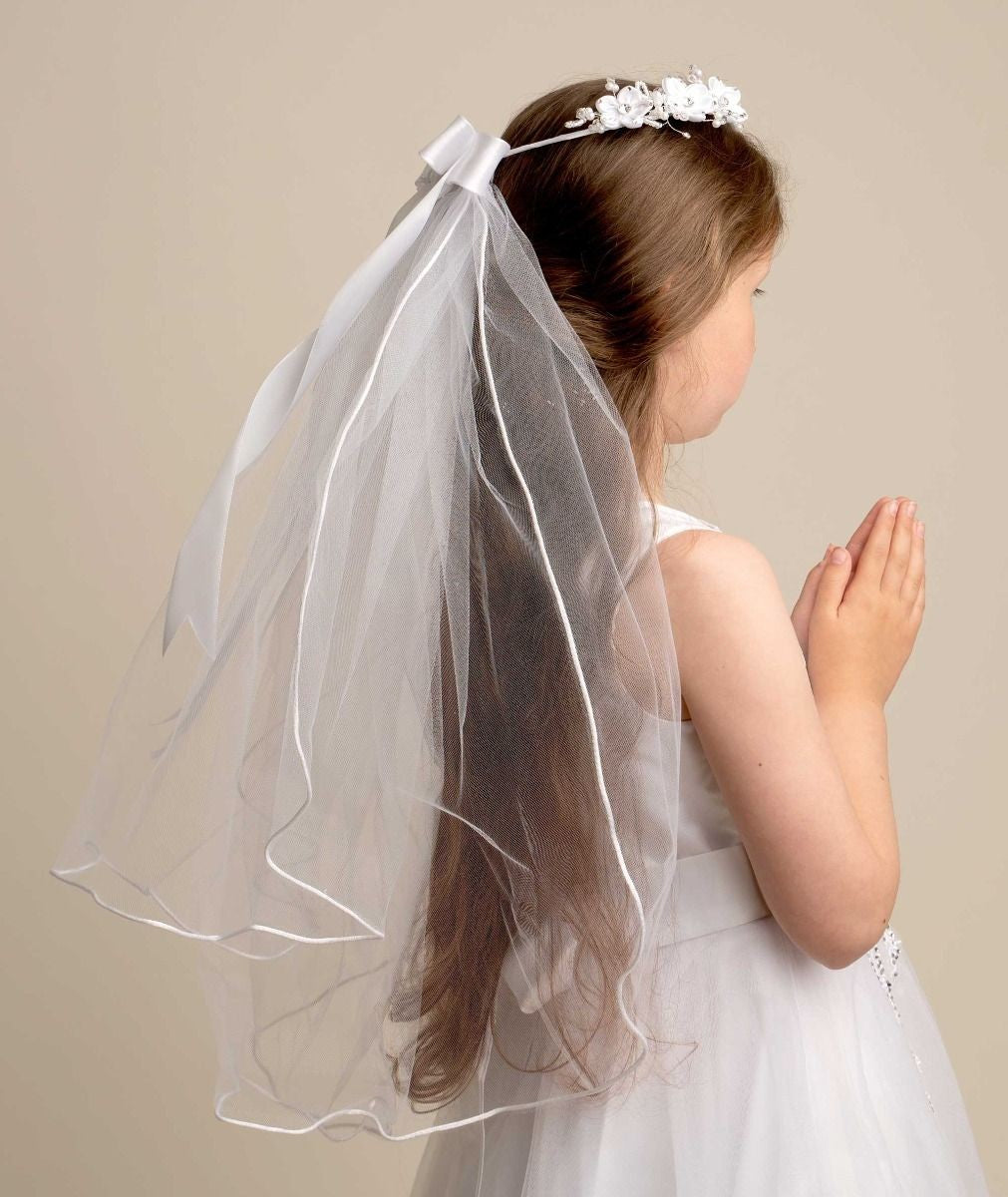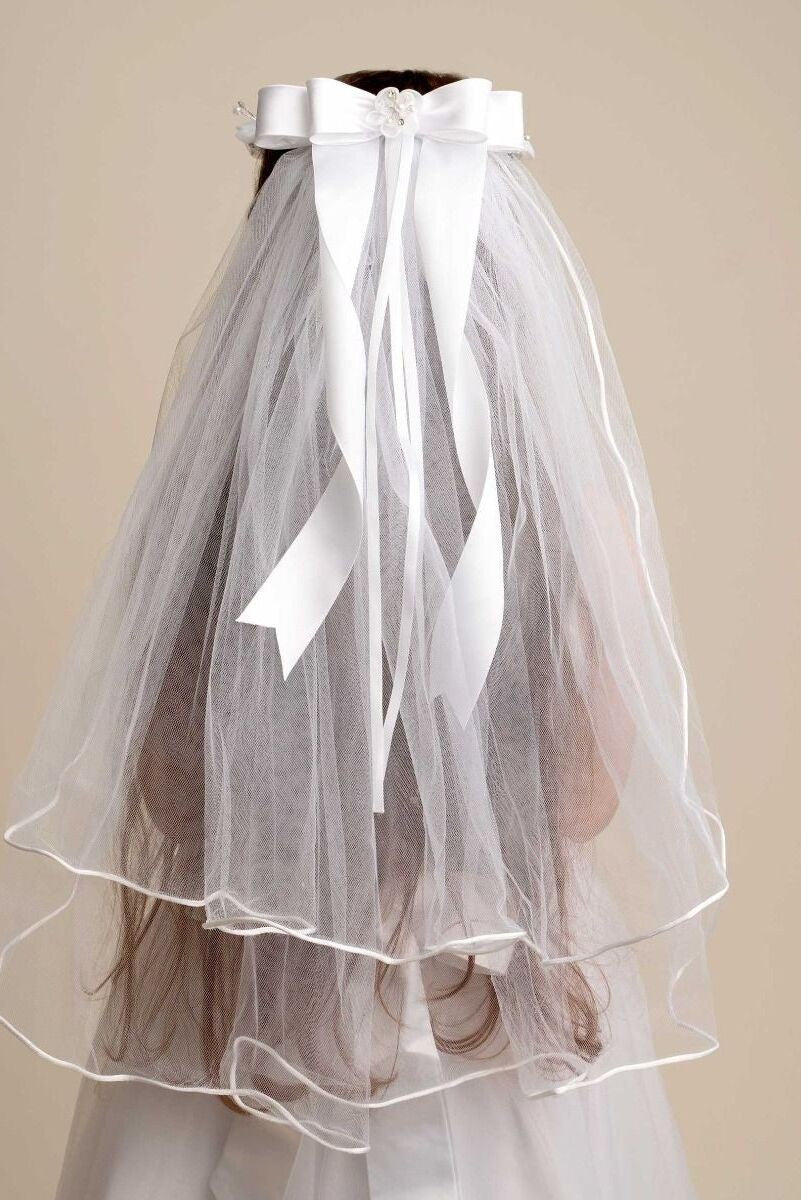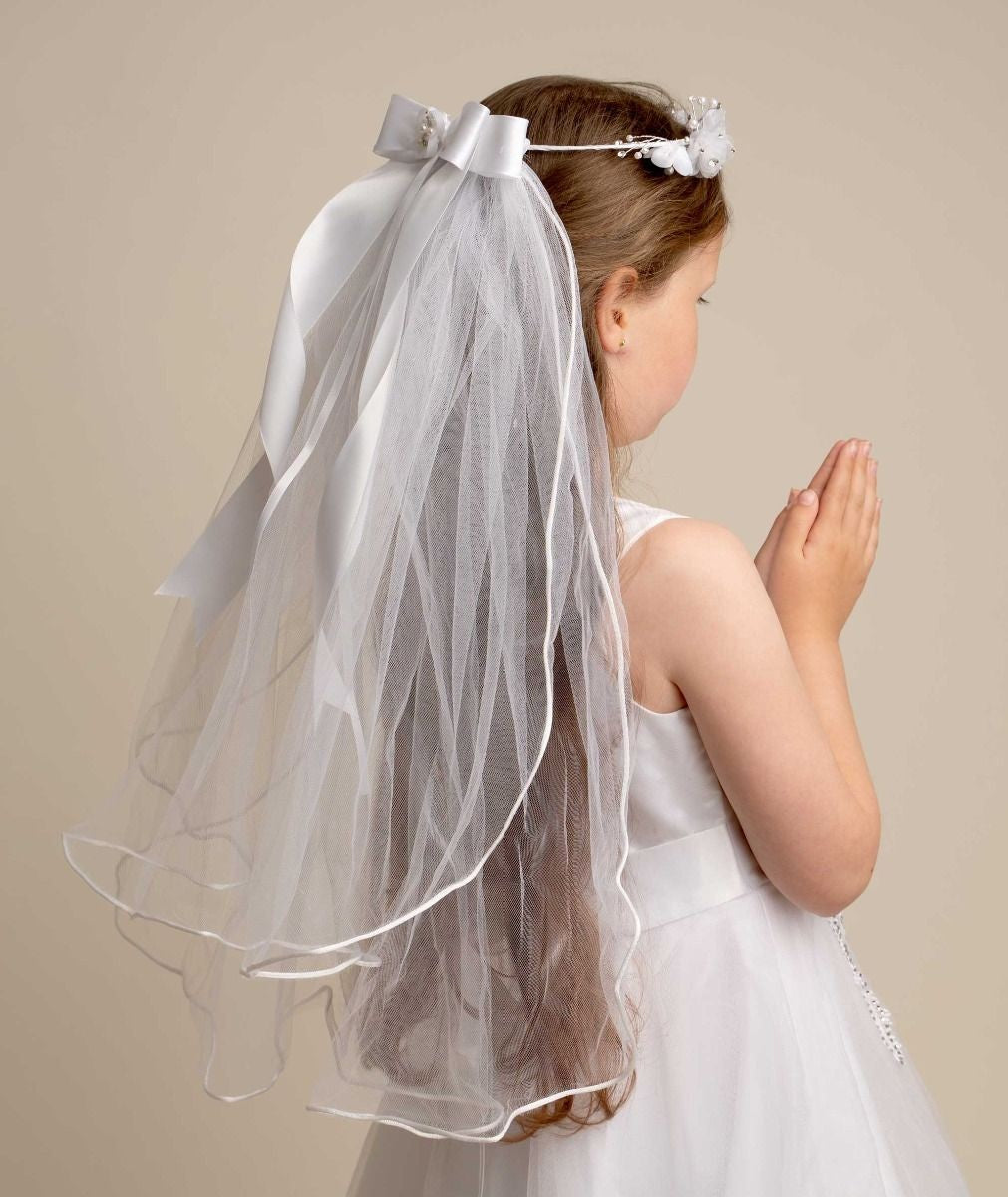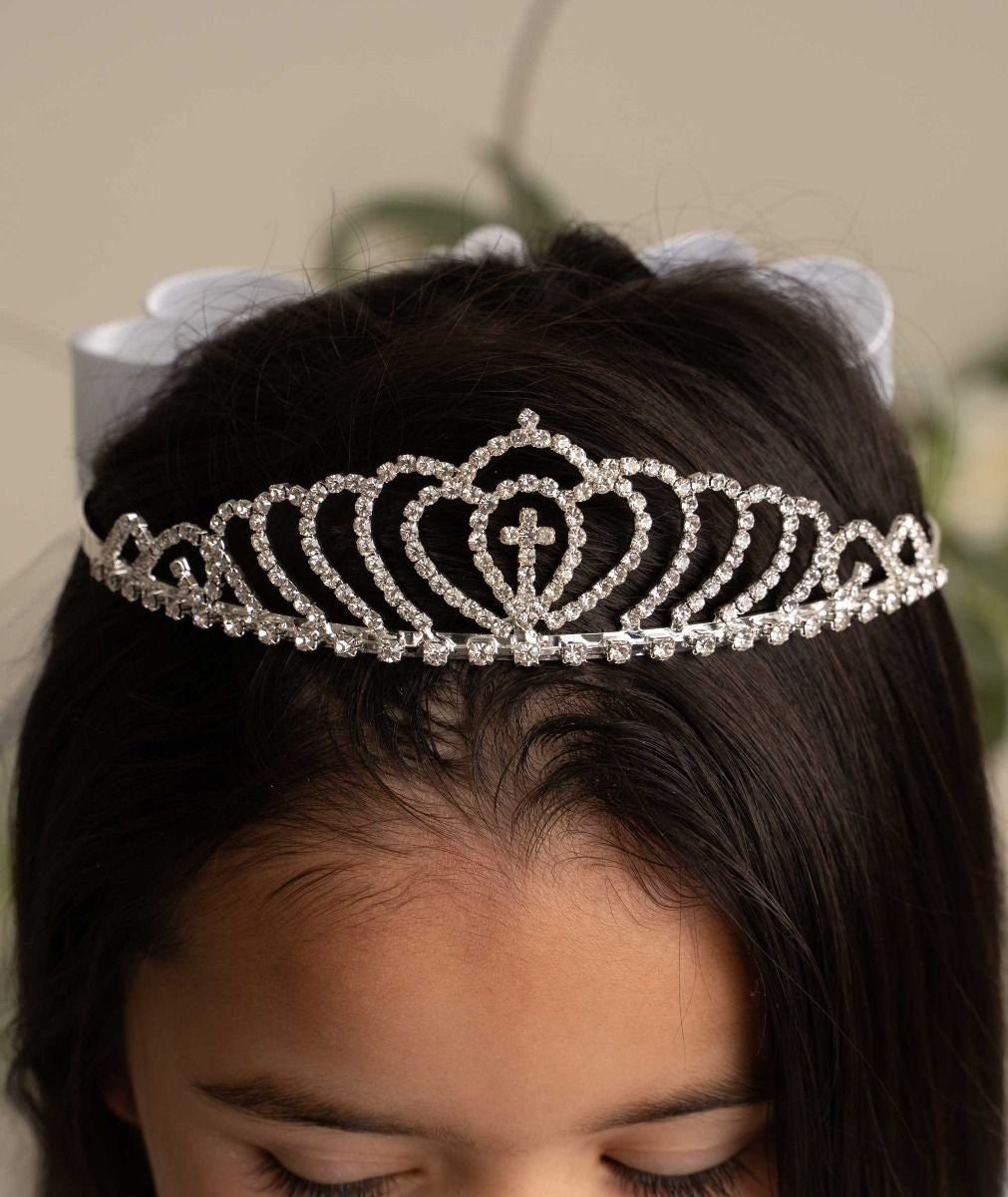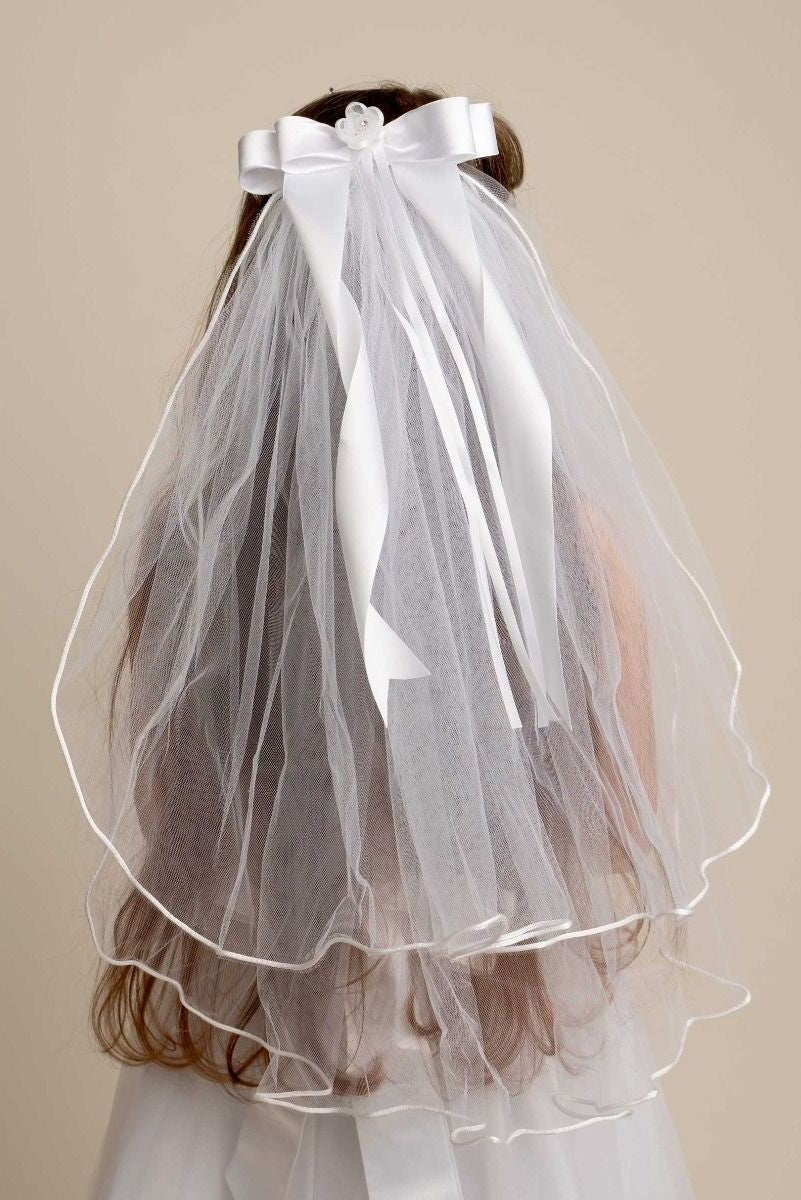Filters
Elegant Veils for Girls
Step into a world of refined elegance with our stunning selection of veils
for girls, available exclusively at SIRRI. Our veils are crafted with
meticulous attention to detail, using only the finest materials to ensure they
are as beautiful as they are comfortable. From first communions to flower girl
duties at weddings, our veils add a touch of sophistication and timeless beauty
to any outfit. Each piece is designed to complement our array of girls' dresses
and accessories, making it easy to coordinate a complete and polished look.
Explore our collection to find the perfect veil that will make her special day
even more memorable. Whether she's walking down the aisle or celebrating
another milestone, our veils are the perfect finishing touch to her ensemble.
Veils are an intriguing accessory
traditionally used in various cultures and ceremonies, often carrying symbolic
meanings. In the context of girls' fashion, veils are typically seen in
religious ceremonies like first communions and weddings, as well as in pageants
and other formal events. Here's a detailed look at the different aspects and
uses of veils for girls:
Styles and
Materials
Veils can vary greatly in style,
length, and material, each adding a different aesthetic and practical element:
-
Materials: Common materials include tulle, lace, and satin.
Tulle is the most popular due to its lightweight and floaty nature, making
it comfortable for children to wear.
-
Lengths: Veils range from short lengths that barely brush
the shoulders to longer ones that can reach the floor. The length chosen
typically depends on the formality of the occasion and the age of the
girl.
-
Embellishments: Many veils feature embellishments like lace
trim, embroidery, pearls, or even crystals. These decorations are often
designed to complement the detailing on a girl’s dress.
Functionality
and Comfort
When selecting a veil for young
girls, comfort is a primary concern:
-
Securing the Veil: Veils are secured with a comb,
clip, or a headband that is designed to be gentle on hair and easy to
position.
-
Wearability: Since children may wear these veils for extended
periods, the materials and fit are designed to prevent irritation and
discomfort.
Choosing the
Right Veil
When choosing a veil, consider the
event and the dress with which it will be paired. The veil should complement
the style and intricacy of the dress, and it should be appropriate for the
solemnity and form of the occasion. For instance, a simple, elegant veil might
suit a first communion, while a more ornate veil with floral embellishments
could be ideal for a role as a flower girl in a wedding.
Cultural
Variations
In different cultures, the veil’s
design and significance can vary. For example, in some Eastern European
cultures, colorful veils may be worn during certain festivals and ceremonies,
diverging from the traditional white or ivory common in Western celebrations.
Veils are more than just
accessories; they are a beautiful blend of tradition, style, and symbolism,
adding depth and meaning to a girl's attire for special moments. Veils are a
versatile accessory, each type carrying its own significance and often being
integral to various ceremonies across cultures. Here’s a breakdown of common
types of veils and the ceremonies they are typically associated with:
1. Bridal
Veils
-
Cathedral Veil: The longest type of bridal veil, often extending
beyond the train of the bride's gown. Used in formal weddings, it
represents grace and elegance.
-
Chapel Veil: Slightly shorter than the cathedral veil, it
touches the ground and is suited for semi-formal weddings.
-
Fingertip Veil: Reaches the bride’s fingertips when her arms are
down. This veil is popular for both formal and informal weddings due to
its practical length.
-
Blusher Veil: A short veil that covers the bride's face and is
lifted during the ceremony, symbolizing the reveal of the bride to the
groom.
2. First
Communion Veils
-
Mantilla: A Spanish-style veil made of lace or silk that
drapes over the head and shoulders, often used during Catholic ceremonies
to signify purity.
-
Wreath Veil: Features a wreath or garland that sits atop the
head with a veil hanging down the back. It's popular in Christian
communions, symbolizing innocence.
3. Funeral
Veils
-
Mourning Veil: Worn as a sign of respect and mourning, these
veils are typically black and are used in many cultures during funerals.
4. Dance and
Performance Veils
-
Ballet Veil: Used in performances, often attached to the
costume for an ethereal effect.
-
Flamenco Veil: Used in traditional Spanish dance, elaborately
styled with the costume to enhance movements.

